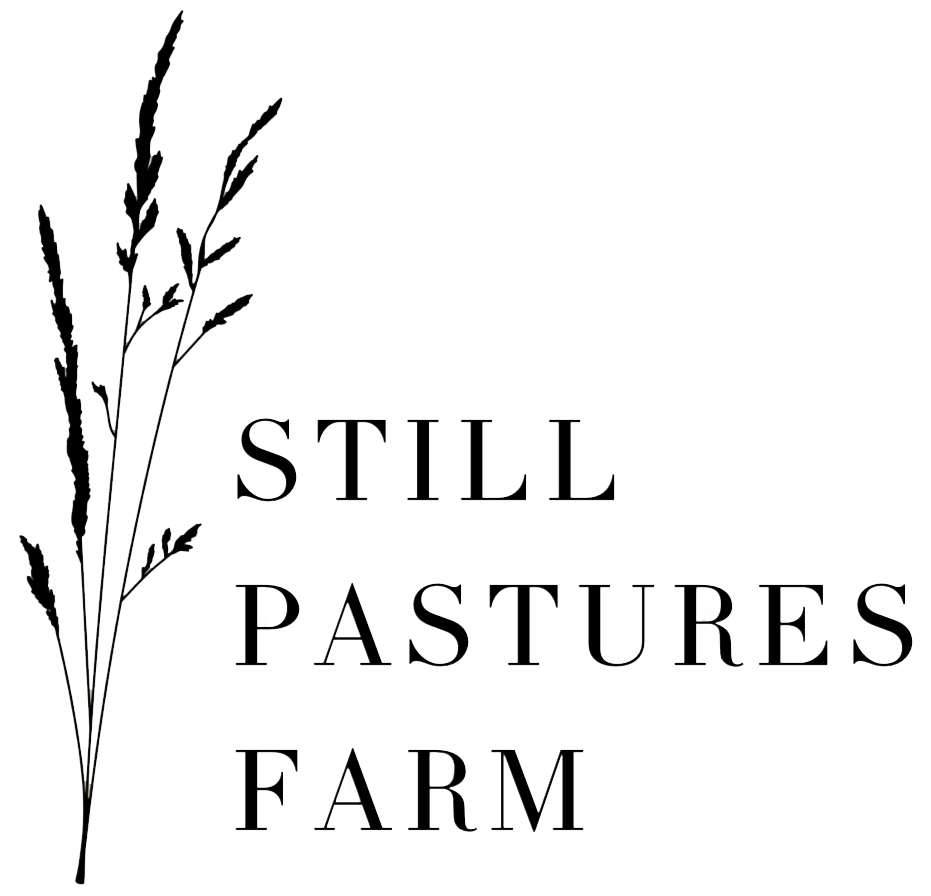Why our prices went up:
Hello Friends,
First, thank you so much for your support and interest in what we are creating together at Still Pastures. We have such an exciting year ahead! If you don’t already have our biggest community events on your calendar, head over to our events tab and add the Third Thursday concert series to your schedule. We would love to have you there.
At the beginning of the year, we shared with you all that we have the desire to grow at the pace of our community. I understand how that could mean different things to each one of you, so I wanted to share what it means to us. Our goal with the farm is to provide local food for our community, food that is full of nutrition and is healthy for the people that purchase it and the family that they serve it to. In pursuit of healthy and nutritious food for our own family, we discovered the value of eating in-season, local foods and that those foods be produced by farmers that are intentional with how they raise it. Analise and I have made the decision to eat as close to “ideal” as we can and according to our own context which includes cutting out as many GMOs, Pesticides, Herbicides, antibiotics, and vaccines in the foods that we eat personally. We also place value onto how the animals are treated as they prepare to provide for our needs which looks like eating as close to the diet as God designed them for and being treated by their shepherds, ranchers, and stewards with intentional care, that their lives would be as enjoyable and healthy as possible leading up to their provision for us.
As you can imagine, when we set out to reach that high bar which we have set for ourselves, we had a lot of learning to do. In the beginning, we were learning so that we could choose who to purchase from at the local farmer’s markets. As we continued this journey of learning, the Lord stirred in us a desire to return to the land that I was raised on and reimagine the farm that my family has been managing there for generations. We started to see the need for a place that people could learn about a better way to raise food, and where they could pass that knowledge on to their children as we will to ours.
In 2022, we moved back to the farm and began that journey. In 2023, we made our first sales of pasture-raised chicken, a few garden goods, and some sweet corn. All raised in line with this ideal we have for our own nourishment. What a joy it has been to have your support and encouragement!
This year, the Lord has laid on our hearts a desire to grow wisely at the pace of our community. Growing wisely requires a deeper understanding of the monetary impact of the decisions we make on the farm. In order to be sustainable, we have to be profitable. In order to grow with the community, they will have to see the value in what we are providing, and we have to steward that value transfer well. There is this vein of discomfort in the regenerative ag community that regards profit as something to be hidden behind a veil or even avoided. A feeling that we should not aim for profitability but rather solely for provision to others. Unfortunately, without profit there will be no small/medium local-sized farms to provide nutritious food to our communities. If this happens, shifts in world, national, or local policies and supply chains will directly affect the quality of and choices of food available to us. If there are no local-scale farms supplying food goods for their communities then there is no hope for a better nutritional future for our children.
We want to share what we learn with all of you as we learn it! Last year, we sold chicken for $5.50/lb. We sold about 240 pounds of chicken at that price (50 chickens averaging 6 pounds, $33) - a huge blessing and encouragement for us. If you are keeping track, that is about $1320 in revenue from those sales. As far as costs incurred, each chick cost $3.26, they ate an average of 22lbs of feed at a cost of $0.72/lb including delivery, they each required $4 in labor (from friends and family) to butcher. All that comes out to around $23 of cost for each $33 chicken we sold. After you factor in death loss (these chickens were not sold and as such, their input costs get shared among the other chickens that did survive) each chicken incurs a “cost to produce” of $25.55, unfortunately, as the keen-eyed among you will notice, this does not include the labor required to move them daily and feed and water them. Nor does it include any depreciation that we incur each batch on the coops they are raised in.
The material cost of each coop in 2023 was $400, we expect 4 years of life out of each of them, so the $100 in depreciation gets applied evenly over each chicken that goes through the coop. With low batch numbers, that impact is large about $2.17/chicken. This year, with 2 batches of 30 going through each coop that number will be $1.6, if we can get to 4 batches, it would be $0.83.
My estimate for the labor per batch is an average of 1 hour per day for 9 weeks last year. If I were to have paid someone $20/hour to do the work that would have been $1260/batch or $27/bird last year (HA!). This is pretty high because the batch was only 45 birds to spread that labor over. This year, we will be running 100 birds per batch in 3 coops, since I know a bit more about what I am doing, I am estimating no increase in time even though the number of chickens has more than doubled. I am also only going to have the batches grow for 8 weeks to keep them a bit smaller and more tender. So 8 weeks x 7 hours per week x $20/hr comes out to 1120 over 90 birds (after death loss) or $12.44/bird.
As I do not know a better way to provide a synopsis: in 2023, the actual economic profit for each chicken was an average of -21.72. As many people have said and I often repeat: there is no way to get around paying for an education, it either comes in the form of mistakes or you pay someone to learn from their mistakes and hopefully avoid making the same (school). I am not looking to pay myself for my labor as the farm starts up, but it is something I must consider if my dreams of providing food for 100 families in Lincoln are to ever come to fruition. I will need to pay people to come alongside me in this to provide enough for that growing community.
This year, we sold the first batch and a half at last year’s prices. You can see the impact that will have. The rest of the sales this year will be at $7.5/lb an increase of $2/lb. This year, the price of chicks has gone down, the price of feed is the same (as far as I know…), but the batches are larger and allow me to spread the labor and depreciation over more birds. We are shortening the growth time and thus the finish weight which will result in a better product and save 7 hours of labor per batch. We are also shifting our processing to be outsourced which will be a wash cost wise but free up some time in life (of most importance, really).
Each chicken will be sold for $7.5/lb and, I estimate, average 4lbs resulting in $30 of revenue.
Each chick costs 2.98, will eat 17lbs of feed at $0.72/lb, incurs $1.66 in depreciation, cost $2.5 to butcher (comes out to $19.38/ per bird in a batch of 100 but at 10% loss ,which is good for the industry, equates to $21.54/ bird) and $12.44 in labor cost for a total of $33.97 in cost to produce.
Thus an economic loss of $3.97 according to my estimate.
This “loss” will be my education cost and with larger batches next year will be avoided. The “labor cost” will be used to repay the startup costs from last year and help with the bills to get the cows to the stage where they can be milked for saleable milk and provide some value of their own.
Thank you for reading this far! I just want to say thank you again for being on this journey with us. We are extreamly grateful for you.
If you are in a place financially where you cannot afford to pay $7.5/lb, we understand, we have been there too. We are going to offer a “scholarship” discount to anyone who wishes to use it. Kind of an honor system thing. If you type : AtCost24 into the questions bar when submitting your order, we will apply a discount of 28.2%, bringing the cost down to $5.39/lb. This is the cost of production without labor and we would love to help you feed your family nutritious food - if this makes it possible, praise the Lord!
As we get through this season, I will share updates and at the end will share how the numbers end up.
With gratitude,
Dawson

